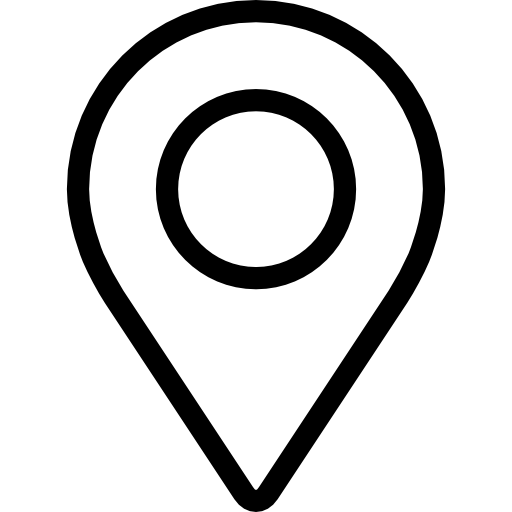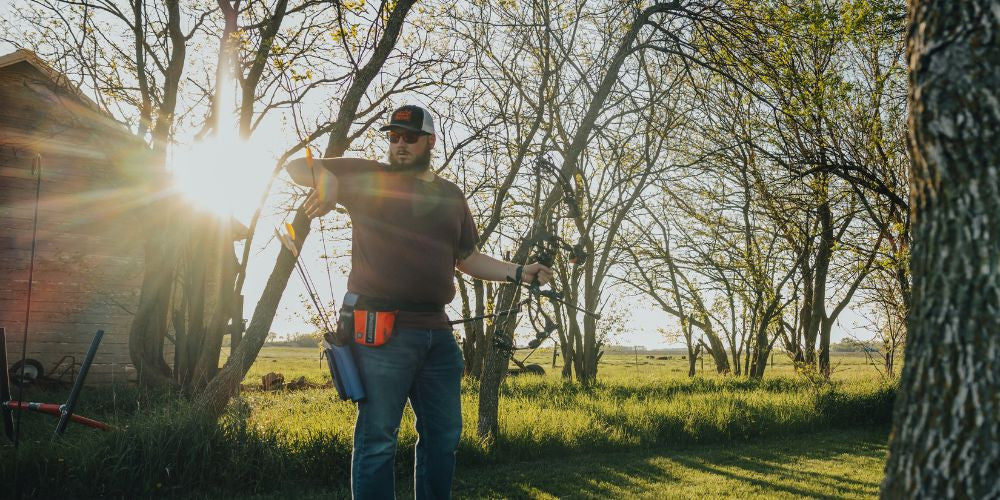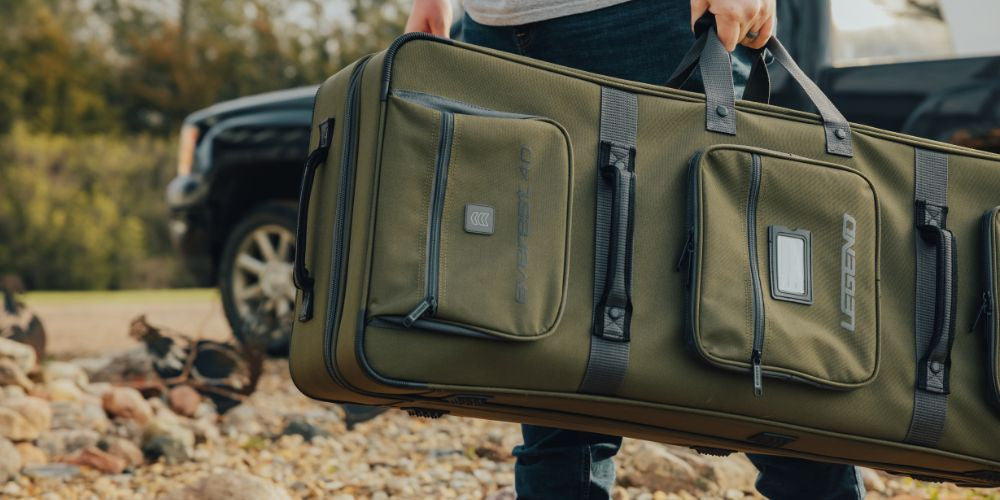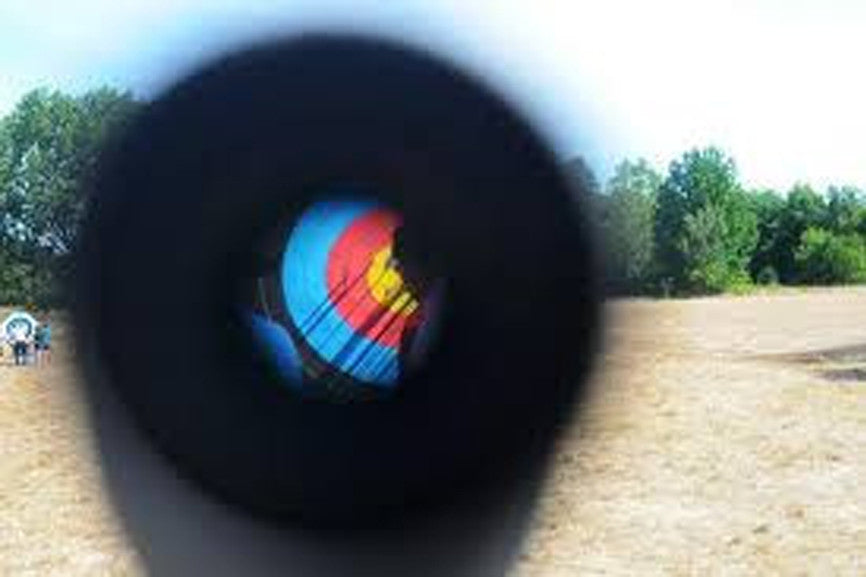Field of View

Whether you are a serious competition target archer, extreme bow hunter, or a weekend recreational warrior in archery, there is one tool that will not only help you shoot you best but give you the instant feedback regardless of the distance you shoot. Optics.
Using Optics to Look Backwards

Around 3500 BCE Phoenicians cooking on sand discovered glass and then it took almost 5,000 years more before glass could be shaped into a lens for the fires telescope. History is exact about the true first telescope, but most likely it was a spectacle maker by the name of Hans Lippershey of Holland. He is credited with the invention but is almost certainly not the first to make one.
The telescope was introduced to astronomy in 1609 by the great Galileo. He was the first to ever see the craters of the moon, rings of Saturn, and the large moons of Jupiter. The telescope, very similar in lens design to that of opera glasses, became an instrument of looking far beyond the naked eye and opening a new world that seemed away in the future to us.
Since the beginning of glass to the invention of the telescope, mankind has made advanced changes in how we see objects at distance. The difference between the times has been like everything else, advancements in technology.
The first binocular was introduced by Lippershey in 1608 and used quarts for the lenses instead of glass. Crystal was also used due to it giving better optics than optical glass. Needless to say the end result was still difficult to see through without squinting and getting tired from eye strain.
Over the next 200 years the optical lenses changed and the modern creation of being able to adjust the view to the individual started a new era for viewers of all types. It wasn’t until 1894 that the “modern” optical design of lenses came about with the help and production techniques of Carl Zeiss. That’s right! The name you still see today as being the best lenses for your camera and smartphone camera are the brain child of Carl Zeiss.
I Can See Clearly Now

Fast forward 100 years and the days of bad optics for binoculars, monoculars, and scopes are behind us… or are they?
Today you can buy a basic telescope that will allow you to see the moon in more detail than Galileo had ever imagined. And for under $50USD you can gaze away at almost anything. That is until you look through that inexpensive scope and notice how it just isn’t very clear and the objects far away still look far away to you. You wouldn’t know any better, like Leppershey, except you have most likely looked through a very high dollar scope of some sort in your life.
A lot of us grew up with a grandfather or relative that bought some really high end bincoculars or had a high powered star gazing telescope. Once you look through the lense of a great set of optics, you will forever see the world differently. And just because you once saw the world that kind of lens doesn’t mean you can’t again on a budget.
Choosing the Scope
So now you are doing some research and are looking for your next set of optics. There are so many choices to make. Choices like what brand, monocular, binocular, spotting scope, telescope, and do you set a budget like $250, $500, $2000. How about how much power do you need?
Let’s take a look at the factors that will help you decide on which scope you need.
First you need to think about what activity you are going to be using the scope. Different activities will have better scopes for them, but that doesn’t mean that you can’t compromise on a scope to do multiple things. Here is a list to give you an idea of the types of optics/scopes and their general uses.
- Monocular
- The Monocular is the simplest and smallest of the scope range. Mono, meaning singular, is a simple one piece optic that is general used for short viewings for less than 250 ft. Some monoculars can be very powerful and see long distance, think telescope. Most people are more familiar with a monocular like the telescope type used by pirates or sailors. The monocular is perfect for its size and weight but does lack much power for viewing long distance. These are perfect for carrying in your pocket due to their size.

- Binocular
- The binocular is the most common of the portable and easy to carry on the person scopes. Bi, meaning two, is a design of two sets of optics, one for each eye. This type of scope is very common and is used from activities from watching birds, sports, hunting, and just about anything you can think of that isn’t a mile away. Some binoculars are extremely powerful and can view distances just as far as a long range scope, but the popularity of the binocular is due to its size and ease of use. It is very portable like the monocular with just an extra optic and most use a strap to keep it on them while moving around.

- Spotting Scope
- Spotting scopes are becoming more popular due to their incredible power and ability to be transported easily they make a great scope for just about everything like the binocular. Spotting scopes can be used short range to over a mile in distance. Depending on the power you can even use a spotting scope to gaze at the stars. Spotting scopes can be hand held but the ideal is to use a tripod to create a more stable viewing. Lugging around a spotting scope can be cumbersome at times and isn’t ideal if your viewing spot is stationary.

Each scope or optic can work for a multitude of activities, but portability is a key factor. The bigger the scope the more powerful they become and that decision is up to you.
When we talk about “power” we are referring to the magnification of the optics. The bigger the size of the scope the larger the optics and the larger the optics the more light it allows in. Thus allowing you to see further.
Understanding the Numbers
When you look at a scope, binocular, or monocular and you want to know the “power”, it can be tricky to understand what the numbers mean so that you know what you need. Let’s take 8x25 for example. The first number (8) refers to the magnification, or how many times closer the object will appear when looking through the scope. The second number (25) indicates the diameter of the objective lens in millimeters, or the size of the end of the scope.
The larger the numbers, the further you can view an object because the size of that object will appear larger.
Another set of number when you look at a scope is the field of view or FOV for short. Field of view is measured in feet at 1,000 yards. So if you are looking at say a fence 1,000 yards away the length of the fence that you can see through the scope is measured in feet as the linear FOV. When choosing a scope the smaller FOV becomes more clear and precise compared to a larger FOV. Some scopes have adjustable magnification and this will affect the FOV. A good scope will shrink the FOV as you increase the magnification.
Prism Type
Without getting into the exact science of optics in a scope, we will keep this to a minimum so that you know what you are looking at buying.
There are 3 major types of prisms used today Roof Prism, Porro Prism, and Reverse Porro Prism. The prisms make sure the object you are looking at stays upright and not appear upside down.
Porro Prism delivers good optics for the buck, but can lack durability and usually are not very compact in design. Traditionally porro prisms are not waterproof.

Roof prism is gaining popularity for good reasons. They are very rugged and durable. Roof prism scopes give you really good optics without having to spend more money. These types are also waterproof and manufacturers like Alpen Optics even give a lifetime no hassle warranty.
Reverse Porro Prism is becoming common and allow for a more compact design allowing them to fit easily in your hand while holding. Think of the binoculars with the two eye pieces and the lens is compact together looking very futuristic.
From Fixed Stars to Fully Adjustable Optics

When Galileo first looked through a telescope, he most likely had to squint and struggle to get a clear image. This is because the optics were not designed well enough to allow you to focus. Today we don’t have that issue. Most scopes, especially higher end, allow you to adjust the focus with the diopter. The diopter allows you to twist the eye piece in order to get a clear view for your vision.

Along with being able to custom focus your scope on whatever you are viewing, manufacturers have gone even further with a few additions to make your viewing even better.
Eye cups are the nifty rubber ring that surrounds most scopes. The allow a cushion for your eye and help reduce unwanted light to enter your eye while viewing through the scope. Some are twist out type and others a fold down type. Both help keep the light out and when wearing glasses they can help make things even clearer.

With modern technology comes great toys. Toys that actually help like smartphone or tablet scope adapters like this one below. They allow you to take pictures while viewing an object through the scope, record video. or even sit back and be a little lazy and watch on a large 10" screen.

What type do I need?


Most scopes in general will work for a majority of activities and you don’t need certain type for any specific thing. Activities like hunting will require a larger lens like 42-50mm. This is because you want more light to enter when it is dim outside like dusk or dawn. Hunters or outdoor active users will definitely want roof prism designs due to their ruggedness and being waterproof.
Bird watchers like everything from small binoculars to spotting scopes. Target archers and shooters tend to like spotting scopes because they can see long distances up close to find their perfect shots, but if you are walking a field range you might not want to carry a spotting scope on a tripod and use binoculars with a strap for ease of carrying. I personally use a monocular for its size and I can see up to 80 yards to get a good idea where I am hitting on the target.
Hopefully this information will give you a start in how to choose your next scope. Always remember to test out each type of scope and see which one suits you best. With so many choices you can’t really go wrong with either and there is always a scope within your budget.
Tony Brasher is a Pro Staff shooter for Alpen Optics and personally uses small scopes like the monocular and a small spotting scope.
 cust@legendarchery.com
cust@legendarchery.com 302 503 5767
302 503 5767 Whitestown, In 47075
Whitestown, In 47075





